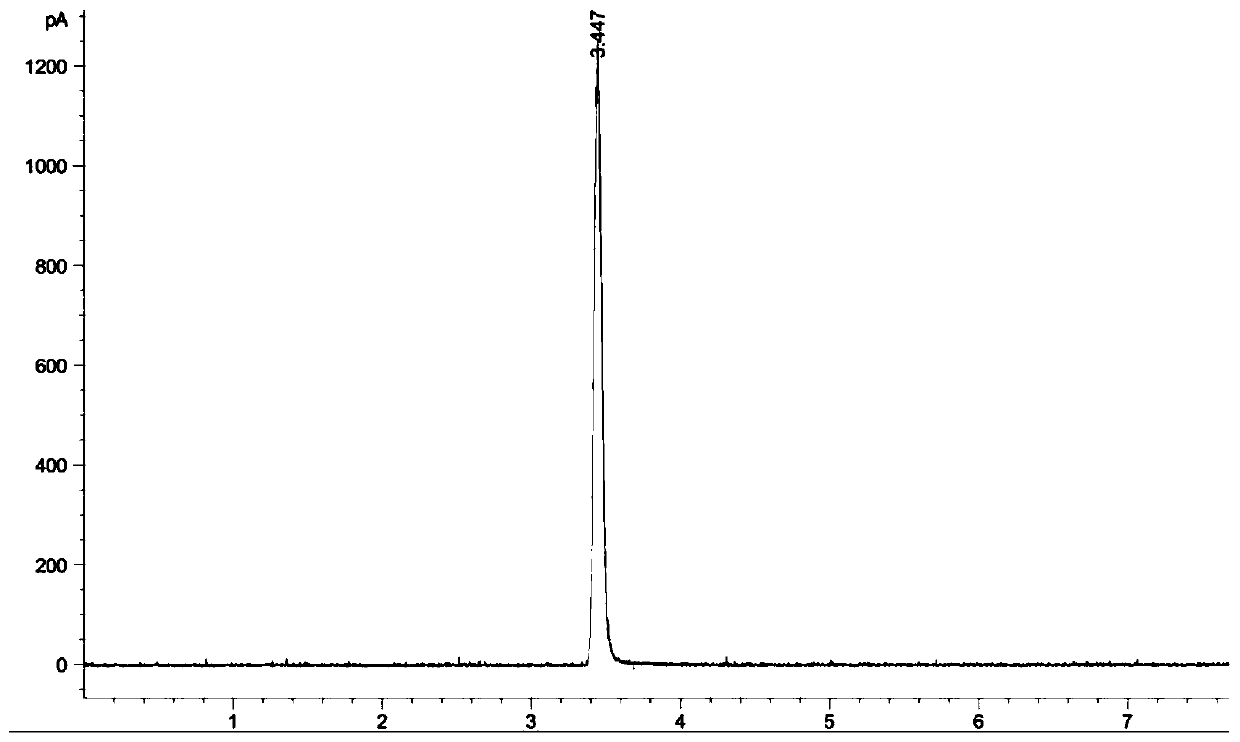Thermal desorption-gas chromatograph and detection method for measuring sulfide content in hydrogen
A technology of a gas chromatograph and a detection method, which is applied in the field of thermal desorption-gas chromatograph for determining sulfide content in hydrogen, can solve problems such as ineffective analysis, and achieve a wide range of applications, accurate test results, and simple calculation. Effect
- Summary
- Abstract
- Description
- Claims
- Application Information
AI Technical Summary
Problems solved by technology
Method used
Image
Examples
Embodiment 1
[0037] The detection method for determining the sulfide content in hydrogen comprises the following steps:
[0038] S1. Pass the hydrogen sample into the adsorption tube filled with porous polymer, then heat the adsorption tube, and blow the sulfide out of the adsorption tube with nitrogen;
[0039] S2. The sulfide blown out from the adsorption tube enters the cold trap at minus 80°C. The cold trap is filled with porous macromolecular polymers. The sulfides are adsorbed and aggregated in the cold trap, and then the cold trap is heated to 300°C within 6s. , so that the sulfides are quickly and concentratedly released from the cold trap;
[0040] S3. The sulfide released from the cold trap enters the sulfur chemiluminescence detector through the uncoated fused silica capillary chromatographic column on the inner wall;
[0041] S4. Sulfide enters the sulfur chemiluminescence detector. First, hydrogen is introduced to burn the sulfide into sulfur monoxide, and then excess ozone i...
Embodiment 2
[0045] The detection method for determining the sulfide content in hydrogen comprises the following steps:
[0046] S1. Pass the hydrogen sample into the adsorption tube filled with porous polymer, then heat the adsorption tube, and blow the sulfide out of the adsorption tube with nitrogen;
[0047] S2. The sulfide blown out from the adsorption tube enters the cold trap at minus 70°C. The cold trap is filled with porous macromolecular polymers. The sulfides are adsorbed and aggregated in the cold trap, and then the cold trap is heated to 300°C within 6s. , so that the sulfides are quickly and concentratedly released from the cold trap;
[0048] S3. The sulfide released from the cold trap enters the sulfide luminescence detector through the uncoated fused silica capillary chromatographic column on the inner wall;
[0049] S4. Sulfide enters the sulfide luminescence detector. First, hydrogen is introduced to burn the sulfide into sulfur monoxide, and then excess ozone is added ...
PUM
 Login to View More
Login to View More Abstract
Description
Claims
Application Information
 Login to View More
Login to View More - R&D
- Intellectual Property
- Life Sciences
- Materials
- Tech Scout
- Unparalleled Data Quality
- Higher Quality Content
- 60% Fewer Hallucinations
Browse by: Latest US Patents, China's latest patents, Technical Efficacy Thesaurus, Application Domain, Technology Topic, Popular Technical Reports.
© 2025 PatSnap. All rights reserved.Legal|Privacy policy|Modern Slavery Act Transparency Statement|Sitemap|About US| Contact US: help@patsnap.com



